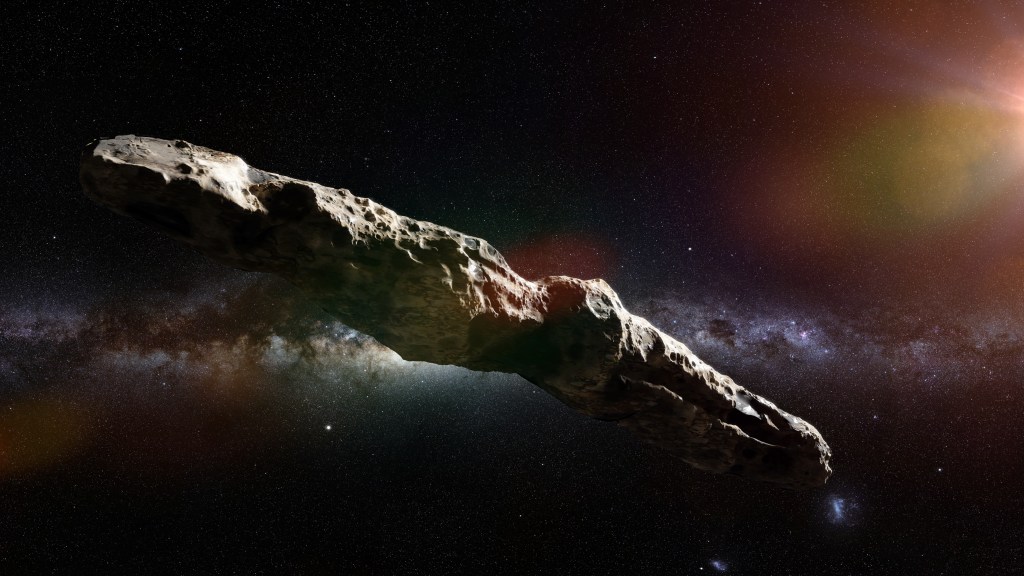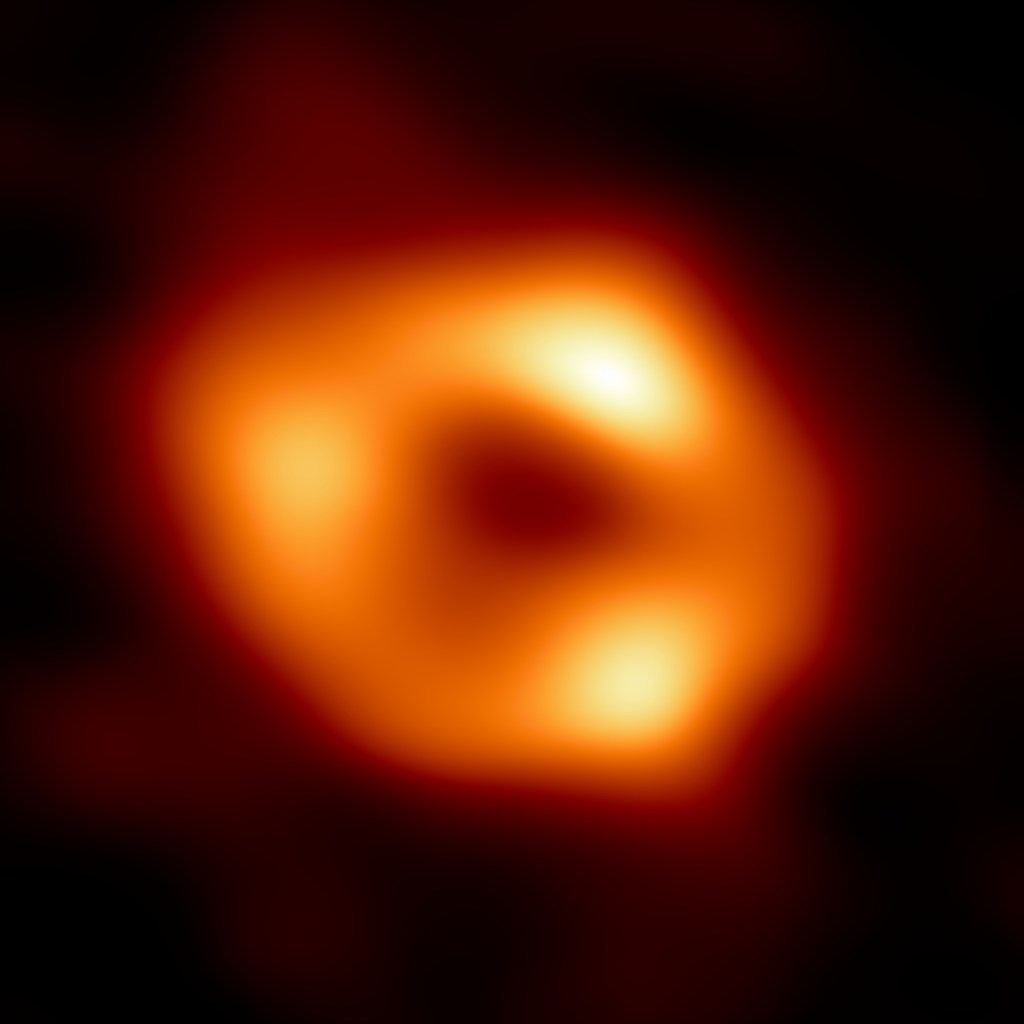Edward Witten, the world-renowned physicist, has built his career by developing influential mathematical theorems and thinking about the mind-bending properties of spacetime and the universe. He won the prestigious Fields Medal in 1990, pioneered a leading “theory of everything,” and currently serves as professor of physics at the Institute for Advanced Study in Princeton, NJ.
Now, in a new paper, Witten delves into another heady topic, this time a little closer to our cosmic home: If there is a black hole lurking in the deep reaches of our solar system, how could humans locate and study it?
Videos by VICE
Witten was inspired to write the paper after reading a 2019 study speculating that a black hole might be orbiting the Sun. “I found it fascinating so I tried to think of a way that their idea can be tested,” he said in an email.
Some context: There’s preliminary evidence that an unknown massive object really is hidden in the outer solar system, some 500 times farther from the Sun than Earth. For years, scientists have been perplexed by the motions of some trans-Neptunian objects (TNOs), a class of space rocks located way beyond the planets, which display oddly clustered orbits.
A popular explanation for the phenomena is that the solar system contains an undiscovered “Planet 9,” a world with about ten times the mass of Earth. Its gravitational force, so the hypothesis goes, is sculpting the weird orbital patterns. The speculative world has never been directly detected and nobody knows yet if it exists, though scientists are actively searching for it and exploring alternate explanations for the TNO effects, such as a distant icy debris disk.
The notion that Planet 9 might be a black hole was first presented in the 2019 paper, referenced above, which was authored by physicists Jakub Scholtz and James Unwin. The team speculated that a primordial black hole (PBH)—a special type of hypothetical object that formed in the early universe—could be in the same mass range as a Planet 9 candidate.
Unlike stellar black holes that form from the explosive deaths of stars, PBHs are thought to have been generated by gravitational perturbations in the first moments after the Big Bang. Much like Planet 9, nobody knows for sure if PBHs exist. Theoretically, however, they could be far less massive than stellar black holes or supermassive black holes, and so could be mistaken for a planet (though PBHs would only be about the size of a tennis ball).
Any opportunity to study a black hole up close—not to mention observe a relic of the early universe—would offer an unparalleled natural laboratory with countless applications. Major unresolved questions about general relativity, particle physics, and the evolution of the universe could be constrained by in situ observations and measurements of a black hole.
But if the solar system really did pocket an ancient black hole at some point, it could be extremely challenging to track it down. “One needs to launch dozens or preferably hundreds of probes in different directions searching for it,” Witten said. “This is impractical as a single conventional mission would cost hundreds of millions of dollars.”
In his study, published on arXiv last week, Witten suggests that the Breakthrough Starshot concept—a futuristic vision that involves accelerating fleets of tiny spacecraft to relativistic speeds with powerful ground lasers—could be one way to overcome this challenge and root out a PBH, if it’s there.
Breakthrough Starshot is a $100 million research project tasked with developing an interstellar fleet capable of reaching the nearest star system, Alpha Centauri, within decades of its launch.
Humans currently don’t have the technical prowess to build the concept as imagined. But if we do succeed in developing spacecraft that can travel close to the speed of light, we could finally chart out the murky outer reaches of the solar system, in addition to sailing to interstellar targets.
“There are lots of bodies that have been discovered in the outer solar system and have not been visited by spacecraft,” Witten said. “If one could really go ahead with Breakthrough Starshot, it might become practical to do flybys of literally dozens of unexplored objects in the outer solar system.”
The Starshot concept would be particularly well-suited to solve the mystery of Planet 9 because of “two obvious advantages,” Witten added: “You can get there in ten years instead of 50, and once you build the very expensive accelerating facility, it might be practical to launch hundreds of probes.”
This proposed recon mission wouldn’t have to travel quite as fast as the Starshot interstellar fleet, which is expected to accelerate up to 20 percent the speed of light. In order to reach the environs of the hypothetical planet or PBH within a decade or so, Witten calculated that the fleet would only have to travel at about 0.1 percent the speed of light.
That is still an incredibly swift clip, but it is also slow enough to allow each mini-spacecraft to carry a bit more equipment, including next-generation timekeeping and communications devices that would be necessary to report accurate information back to Earth. The mini-probes wouldn’t even have to get that close to the object to detect it, as ”a distance similar to the distance from the Earth to Pluto might be good enough,” Witten said.
If just one of these probes, out of hundreds or thousands, was able to pin down Planet 9’s general location, mission leads could then follow its tracks with a much larger spacecraft, loaded with instruments.
“Once one knows where Planet 9 is, I think one would want to launch a more capable probe to study it in detail,” Witten explained. “This might take the form of a conventional spacecraft making a voyage of 50 years; that might be a sensible thing to do if one has discovered Planet 9 and wants to study it up close, better than can be done by a flyby by a miniature spacecraft.”
Given that all of these technologies will likely take decades to develop, if they turn out to be technically feasible at all, it could be upwards of a century before we might get clear data about the identity of this object in the outer solar system (again, assuming it exists).
While it would be absolutely sensational to discover a new planet or cluster in these outer wilds, finding a PBH skulking in the dark would be completely revolutionary. Right now, the nearest known black hole is 1,000 light years away, far too distant for any type of robotic rendezvous. But if there was one right in our solar backyard, humans could send spacecraft out to directly study one of the universe’s most exotic creations.
Moreover, it’s possible that whatever is causing the TNO orbital anomalies is even weirder than a black hole.
“An example of an idea that is more exotic than the PBH hypothesis is that Planet 9 could be a stable quark nugget,” said Witten, describing a theoretical object made of aggregated subatomic particles called quarks.
“They probably don’t exist, but our understanding of the force that holds an atomic nucleus together is not good enough for us to be sure,” Witten noted. “Unless one can look up close, it would be hard to tell the difference between a black hole or a quark nugget with the mass of Planet 9.”
All of this is conjecture at this point, although hidden planets, black holes from the dawn of time, and quark nuggets are among the most worthwhile topics for conjecture imaginable. It’s possible that in the near future, we will discover Planet 9 in the outer solar system with a direct detection, or that more evidence will emerge to suggest it is just a cluster of icy celestial bodies.
But if that doesn’t happen, many generations could pass before we have the ability to finally discover what might be hidden in the distant shadows of our native star system.
“Some people speculate that in centuries to come, humans might establish colonies in the outer solar system,” Witten said. “If that happens, eventually humans might visit Planet 9.”
As a precaution, of course, he advised that humans should not “set foot on it if it turns out to be a black hole!”
So if there is anyone reading this article centuries from now, in an era that has paved a road out into the deep solar system—be careful where you stand.




